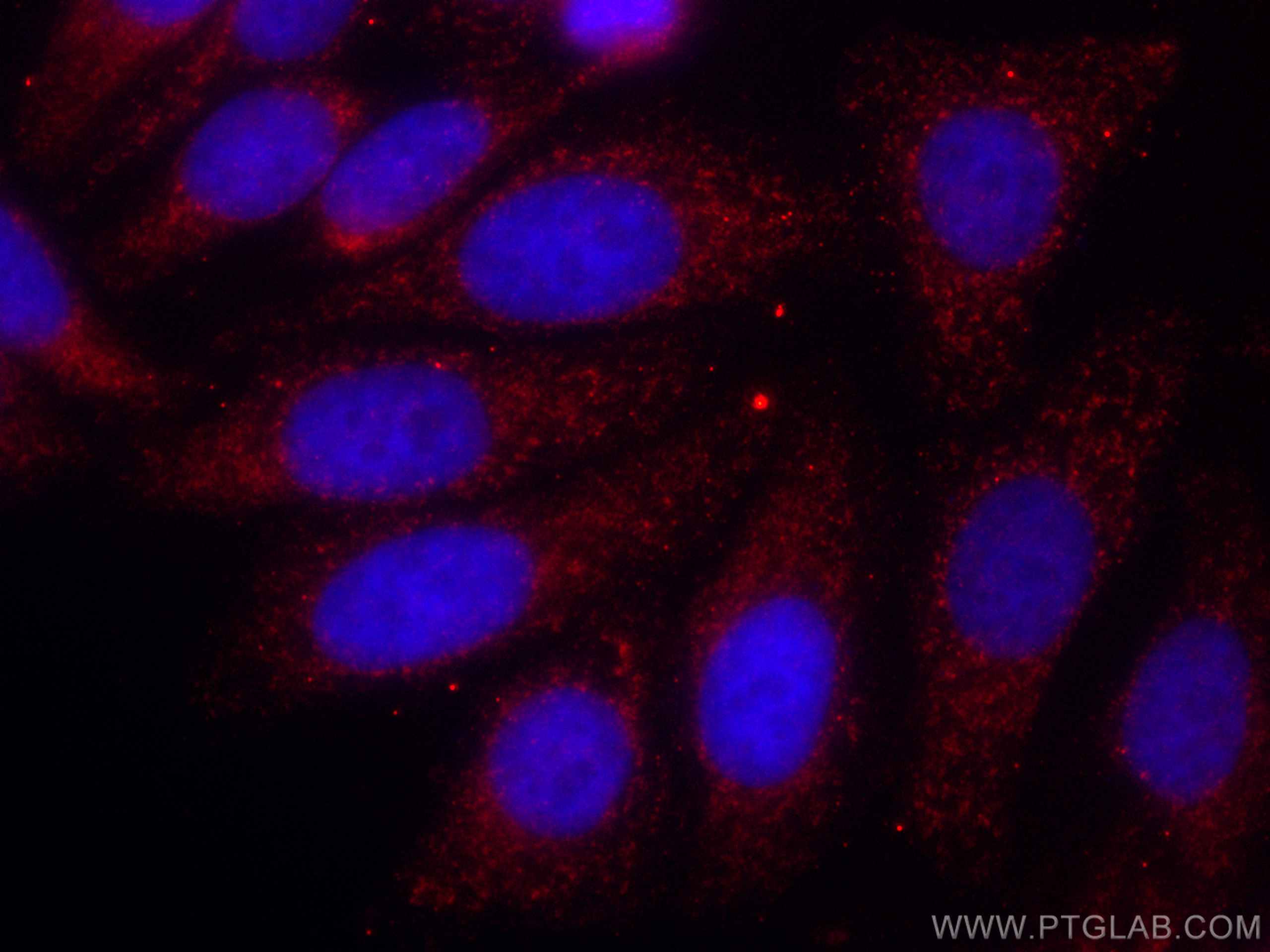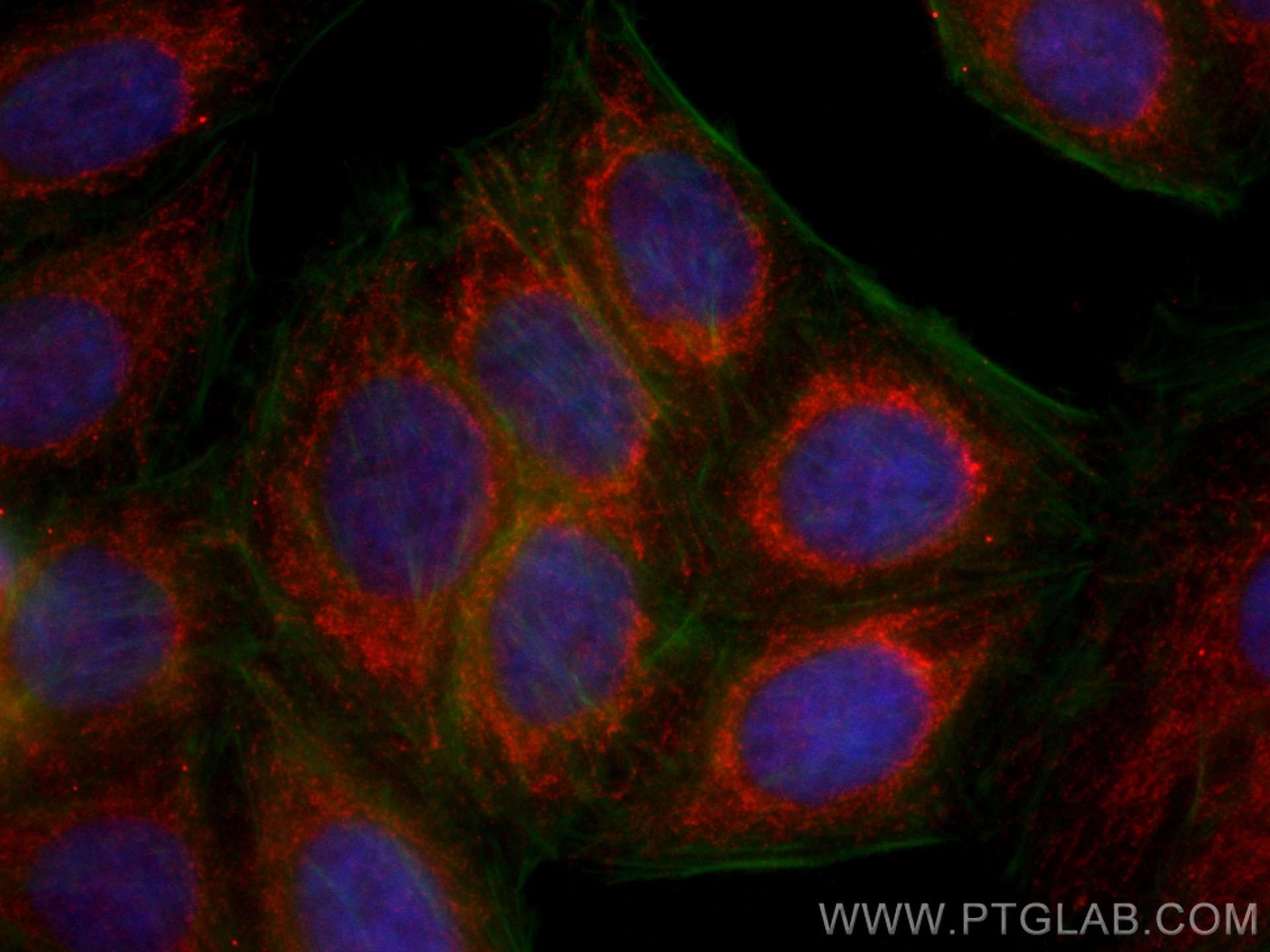ATP5C1 Monoklonaler Antikörper
ATP5C1 Monoklonal Antikörper für IF/ICC
Wirt / Isotyp
Maus / IgG2a
Getestete Reaktivität
human
Anwendung
IF/ICC
Konjugation
CoraLite®594 Fluorescent Dye
CloneNo.
1B5A2
Kat-Nr. : CL594-60284
Synonyme
Geprüfte Anwendungen
| Erfolgreiche Detektion in IF/ICC | HepG2-Zellen |
Empfohlene Verdünnung
| Anwendung | Verdünnung |
|---|---|
| Immunfluoreszenz (IF)/ICC | IF/ICC : 1:50-1:500 |
| It is recommended that this reagent should be titrated in each testing system to obtain optimal results. | |
| Sample-dependent, check data in validation data gallery | |
Produktinformation
CL594-60284 bindet in IF/ICC ATP5C1 und zeigt Reaktivität mit human
| Getestete Reaktivität | human |
| Wirt / Isotyp | Maus / IgG2a |
| Klonalität | Monoklonal |
| Typ | Antikörper |
| Immunogen | ATP5C1 fusion protein Ag1343 |
| Vollständiger Name | ATP synthase, H+ transporting, mitochondrial F1 complex, gamma polypeptide 1 |
| Berechnetes Molekulargewicht | 33 kDa |
| Beobachtetes Molekulargewicht | 33 kDa |
| GenBank-Zugangsnummer | BC000931 |
| Gene symbol | ATP5C1 |
| Gene ID (NCBI) | 509 |
| Konjugation | CoraLite®594 Fluorescent Dye |
| Excitation/Emission maxima wavelengths | 588 nm / 604 nm |
| Form | Liquid |
| Reinigungsmethode | Protein-A-Reinigung |
| Lagerungspuffer | PBS with 50% glycerol, 0.05% Proclin300, 0.5% BSA |
| Lagerungsbedingungen | Bei -20°C lagern. Vor Licht schützen. Nach dem Versand ein Jahr stabil. Aliquotieren ist bei -20oC Lagerung nicht notwendig. 20ul Größen enthalten 0,1% BSA. |
Hintergrundinformationen
ATP5C1(ATP synthase subunit gamma, mitochondrial) is also named as ATP5C, ATP5CL1 and belongs to the ATPase gamma chain family. Some scientists reported the complete sequence of the gene for the human ATP synthase gamma subunit and described tissue-specific isoforms of the subunit generated by alternative splicing of exon 9. The liver (L) isoform differed from the heart (H) isoform by the addition of a single amino acid (asp273) at the C terminus. (PMID:8227057).
Protokolle
| PRODUKTSPEZIFISCHE PROTOKOLLE | |
|---|---|
| IF protocol for CL594 ATP5C1 antibody CL594-60284 | Protokoll herunterladen |
| STANDARD-PROTOKOLLE | |
|---|---|
| Klicken Sie hier, um unsere Standardprotokolle anzuzeigen |



